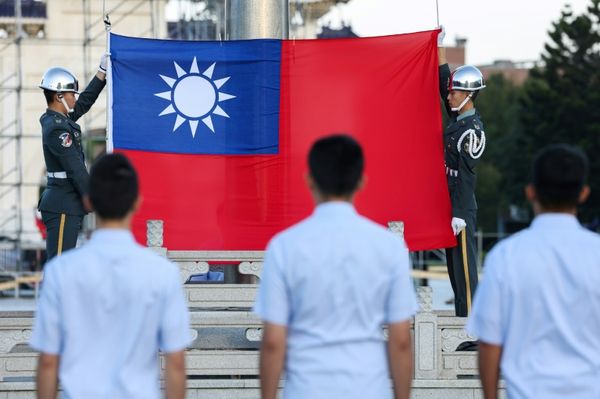
Have you bitten into a butter-laden, soft pav with a spoonful of spicy, lime-slathered bhaji at Maruti Pav Bhaji in Vile Parle and sung praises of whoever made it? How about reaching the bottom of a warm bowl of Soam’s light, sweetly-tempered vaghareli khichdi and wondering who to send compliments to?
While Mumbai’s new restaurants go all-out to advertise their chefs, their Michelin stars and their posh past, cooks at older places have been churning out iconic dishes decade after decade without a hint of the same stardust. They spend hours on their feet, sweating over raging stoves, replicating (and perfecting) well-loved foods, all amid the chaos and madness of a busy kitchen.
Here are the names behind some of our favourite foods.

Gautam Purohit, 51, owner and head chef
Thank him for: Undhiyu or a sweet-spicy mixed vegetable specialty at Shree Thaker Bhojanalay, Kalbadevi
Purohit claims to have Rajasthani roots, but going by the mouth-watering Gujarati fare served at his restaurant, the fact becomes a little difficult to digest. “My father Maganbhai Purohit set up this restaurant 71 years ago because he loved preparing Gujarati dishes. I watched him skillfully plate up the meals here as a child and the passion rubbed off on me,” he says. For the last 35 years, he has been an integral part of the kitchen which serves over 400 thalis daily. Not only does he plan all 35 items on the menu but also prepares them himself.
His day starts at around 6.30 am with a trip to the market to select the vegetables that will go into the day’s meals. “Although the menu is always pre-planned, it depends on the quality of vegetables available. If the bhindi is not to my liking, the menu immediately has to be changed,” Purohit says.
His doodh pak, a thick, sweet rice pudding, takes seven painstaking hours to prepare and his thali has four kinds of dal. He ensures every lot prepared is tasted before it is served. ”I have to look into all the nitty-gritties, because in the end these dishes are the reason we are what we are.” This makes one of his claims easier to digest: a patron who lives abroad loves Shree Thaker’s puranpoli so much that she packs 365 of them every time she comes to Mumbai.

Sachin Yadav, 37, kitchen manager
Thank him for: The melt-in-the-mouth Upma at Cafe Madras, Matunga
Twenty years ago, when Yadav came to Mumbai from Ratnagiri to work for Café Madras owner Jagdish Kamath, he was a mere novice. “I was hired to wipe the tables and wash the dishes and that is all I did. On a particularly busy day, Jagdishji asked me to go into the kitchen and learn whatever I could.” That was the day he started learning how to whip up everything from piping hot idlis to mastering the art of making the fluffy, upma sprinkled with spicy podi.
According to one of the owners, Devavrat Kamath, 35, Yadav’s Upma is the best in the restaurant because it is so light and flavoursome, that it literally melts in the mouth. In fact, patrons line up at the 75-year-old eatery to enjoy the upma-kaapi (upma-coffee) combination because they claim it’s the closest they can get to the breakfast served in the Udipi restaurants of Chennai. “I’ve seen him grow from an illiterate errand boy to a cook, and now he has even learnt how to operate the computer at the billing counter,” says a proud Kamath.
Read: 5 must-try coffee and food pairings

Ram Anna, cook
Thank him for: The thick, creamy kheer at Crystal, Chowpatty
Ram has been working for Crystal for the last 35 years, stirring the ladle of the famous kheer, that soothes the cravings of several students and working professionals in the city. He doesn’t remember his own surname, and is fondly known by regulars as Ram ‘Anna’ or elder brother.
Initially, the grand the kheer-making affair was a treat for the senses, when college kids would stop by to watch him sit by the large vat at the entrance of the restaurant, stirring the bubbling rice pudding made every day. “The secret is keeping it simple. It takes around four hours to make around 30 litres that attracts so many youngsters to our joint. It reminds them of their ‘maa ke haath ka khana’,” says the man who is rather shy. The actual recipe is what Rita Khanna, 67, the founder’s wife, has been making for the last 50 years. Khanna, to this day makes it a point to visit the restaurant six days a week and supervise how the kheer is being made.
The motto of Crystal is to be a home away from home for all those who have come to the city and miss food back at home. “People from Nasik and Punjab come down to have our food because of the fond memories they have attached to it,” says Poonam Mehra, 47, who runs the restaurant with her son Sanket. “It is also a known fact that you cannot leave Crystal without trying bowl of the kheer and then asking for a second helping,” she adds.

Mahindra Soni, 31, Pav Bhaji Cook
Thank him for: The heavily-spiced black pav bhaji at Maruti Pav Bhaji, Vile Parle
The eatery famous for its black pav bhaji has been serving the same dish for the last 46 years, which has patrons lining up outside their modest outlet in Vile Parle. Soni who hails from a small village in Uttar Pradesh has been working at the restaurant for nine years, using the secret recipe that belongs to the owners, the Mhatre family,to make the spicy, buttery bhaji. “The reason why we are so famous is the secret masala that takes an hour to grind for the preparation of the bhaji. We prepare around 200 plates during the day at home and bring it to the outlet by evening, where it is served after heating and garnishing with a blob of butter,” he says.
The founder, Maruti Mhatre set up the place in 1970 and used the masala that was specially ground at home for the lip-smacking bhajis that went on to become a huge hit among customers. “Our mantra is very simple; we treat all the boys who work with us as a part of our family. They live in the same locality and we trust them implicitly with the recipe and know they will always stay loyal to us,” says Vaibhav Mhatre, 24, who runs the restaurant now.
What is Soni’s most treasured moment, while working at the outlet? ”Once the chef Sanjeev Kapoor stopped by in his car and asked for a plate of pav bhaji made by me. It felt surreal to be praised by someone of his stature and will be something I can tell my kids in future,” he says.
Read: This Mumbai chef made bread upma to win US reality TV show Chopped

Prasad Ramakant Samant, 52, kitchen manager
Thank him for: The smooth vaghareli khichdi garnished with a dollop of ghee and fried spices at Soam, Babulnath
Serving the restaurant for the last eleven years is Samant, the man behind the delicious khichdis and famous jowar pita pocket. “To everyone it might seem like making a khichdi is no big deal, but there is a lot of precision involved.” Even if one ingredient is missing or not up to the mark in quality, the entire dish has to be remade. “The ratio of rice to dal, the duration of cooking time, and of course the right garnishing makes all the difference,” he says. Soam serves around 20 to 25 portions of each type of khichdi on weekdays.
What does he love the most about his job? “We usually have a heavy footfall during the second half of the evening and it is very stressful in the kitchen. But, it is then that I get maximum job satisfaction. Being able to serve good quality food and on a deadline is challenging and fulfilling,” says Samant.
He also mentions that every time Soam bags a prize for its dishes, the kitchen staff is taken to the award ceremony, which is very motivating. “The recipes might be the ones used in every household, but the skill and passion that goes into replicating it in a restaurant environment, daily with the same consistency, is to the credit of my enterprising kitchen team,” says Pinky Dixit, owner of Soam.
Read:These restaurants in Mumbai prepare dishes which can be deceiving







